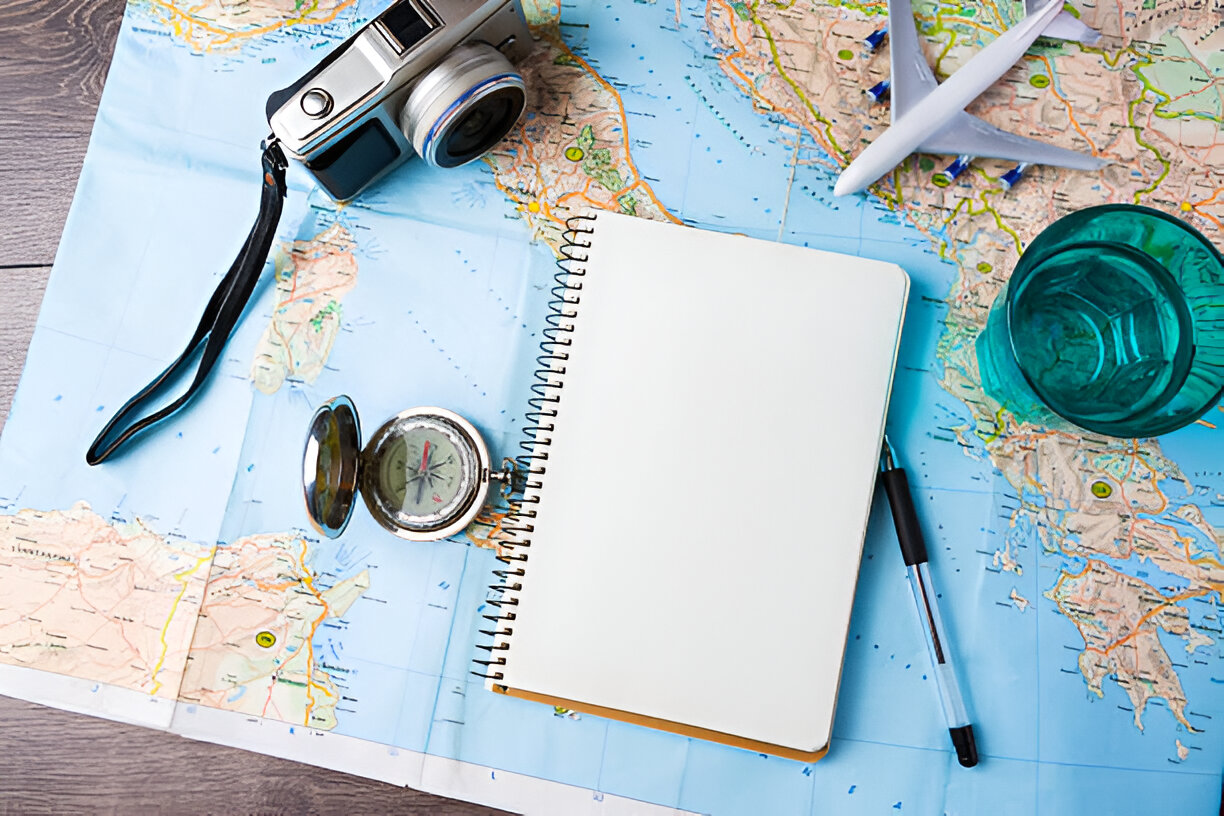“Gear Up, Dive In: Your Ultimate Guide to Adventure Tourism!”
Introduction
Embarking on your first adventure tourism experience is an exhilarating prospect, promising a blend of excitement, challenge, and discovery. Whether you’re planning to trek through dense jungles, scale towering peaks, or dive into the depths of the ocean, proper preparation is key to ensuring a safe and fulfilling journey. Adventure tourism offers a unique opportunity to connect with nature, push personal boundaries, and immerse yourself in diverse cultures. However, it also demands a certain level of physical readiness, mental resilience, and logistical planning. This guide will walk you through essential steps to prepare for your adventure, from selecting the right gear and understanding the local environment to building the necessary skills and ensuring your safety. With the right preparation, your first adventure tourism experience can be a transformative and unforgettable chapter in your life.
Understanding Adventure Tourism: Key Concepts and What to Expect
Adventure tourism is an exhilarating way to explore the world, offering unique experiences that combine travel with physical activity, cultural exchange, and a connection to nature. As you prepare for your first adventure tourism experience, it is essential to understand the key concepts and what to expect, ensuring a rewarding and safe journey. This form of tourism is characterized by activities that involve a degree of risk, physical exertion, and special skills. Common activities include hiking, rock climbing, white-water rafting, and zip-lining, among others. Each activity offers its own set of challenges and rewards, making it crucial to choose one that aligns with your interests and physical capabilities.
To begin with, it is important to assess your fitness level and any health considerations that may impact your ability to participate in certain activities. Adventure tourism often requires a good level of physical fitness, as many activities are demanding and can be strenuous. Consulting with a healthcare professional before embarking on your adventure can provide valuable insights into your readiness and help you prepare physically. Additionally, engaging in regular exercise and training specific to your chosen activity can enhance your experience and reduce the risk of injury.
Equally important is understanding the environmental and cultural context of your destination. Adventure tourism often takes place in remote or pristine natural settings, where environmental conservation is paramount. Familiarizing yourself with the local ecosystem, wildlife, and conservation efforts can enrich your experience and ensure that you contribute positively to the preservation of these areas. Moreover, respecting local cultures and traditions is essential. Engaging with local communities in a respectful and meaningful way not only enhances your experience but also supports sustainable tourism practices.
Safety is a critical aspect of adventure tourism, and being well-prepared can significantly mitigate risks. Researching reputable tour operators who prioritize safety and have experienced guides is a prudent step. These professionals are trained to handle emergencies and provide guidance on best practices for each activity. Furthermore, investing in appropriate gear and equipment is vital. Whether it is a sturdy pair of hiking boots, a reliable helmet, or a well-fitted life jacket, having the right gear can make a significant difference in your safety and comfort.
In addition to physical preparation and safety considerations, mental readiness is equally important. Adventure tourism can be mentally challenging, pushing you out of your comfort zone and requiring adaptability and resilience. Approaching your adventure with an open mind and a positive attitude can enhance your experience, allowing you to fully embrace the challenges and triumphs that come your way. It is also beneficial to set realistic expectations, understanding that weather conditions, unforeseen circumstances, or personal limitations may require flexibility in your plans.
Finally, documenting your adventure through photography or journaling can provide lasting memories and a sense of accomplishment. Sharing your experiences with friends and family can inspire others to embark on their own adventures, fostering a community of like-minded individuals who value exploration and discovery. As you prepare for your first adventure tourism experience, remember that the journey is as important as the destination. By understanding the key concepts and what to expect, you can embark on a transformative journey that not only challenges you physically and mentally but also enriches your understanding of the world and your place within it.
Essential Gear and Packing Tips for Your First Adventure Trip
Embarking on your first adventure tourism experience is an exhilarating prospect, promising a blend of excitement, challenge, and discovery. However, to ensure that your journey is as seamless and enjoyable as possible, it is crucial to prepare adequately, particularly when it comes to selecting the right gear and packing efficiently. The success of your adventure often hinges on the equipment you bring along, as well as how well you organize your belongings. Therefore, understanding the essentials of gear selection and packing can significantly enhance your overall experience.
To begin with, it is important to research the specific requirements of your chosen adventure. Different activities, such as hiking, kayaking, or mountain biking, demand distinct types of gear. For instance, if you are planning a hiking trip, investing in a sturdy pair of hiking boots is paramount. These should provide ample support and comfort, as well as being waterproof to protect against unexpected weather conditions. Similarly, for water-based activities, a high-quality dry bag is indispensable to keep your belongings safe and dry. By tailoring your gear to the specific demands of your adventure, you can ensure both safety and comfort throughout your journey.
In addition to activity-specific gear, there are several universal items that are essential for any adventure tourism experience. A reliable backpack is one such item, serving as the cornerstone of your packing strategy. When selecting a backpack, consider factors such as size, weight, and durability. It should be large enough to accommodate all your essentials, yet lightweight enough to carry comfortably over long distances. Furthermore, a backpack with multiple compartments can help you organize your gear efficiently, making it easier to access items when needed.
Moreover, clothing plays a critical role in your adventure preparation. Layering is a key strategy, allowing you to adapt to varying weather conditions. Start with a moisture-wicking base layer to keep sweat away from your skin, followed by an insulating layer for warmth, and finally, a waterproof outer layer to protect against rain and wind. This approach not only ensures comfort but also enhances your ability to respond to changing environments.
Transitioning to the topic of packing, it is essential to adopt a minimalist mindset. Overpacking can lead to unnecessary weight and clutter, detracting from the enjoyment of your adventure. Prioritize items that serve multiple purposes, such as a multi-tool or a versatile piece of clothing. Additionally, packing cubes can be a valuable asset, helping you organize your belongings and maximize space within your backpack.
Furthermore, it is advisable to create a checklist of essential items before you begin packing. This list should include not only gear and clothing but also important documents, such as identification and travel insurance. By systematically checking off each item, you can ensure that nothing is forgotten, reducing stress and allowing you to focus on the adventure ahead.
In conclusion, preparing for your first adventure tourism experience requires careful consideration of both gear selection and packing strategies. By researching the specific demands of your chosen activity, investing in high-quality equipment, and adopting an organized approach to packing, you can set the stage for a successful and enjoyable journey. As you embark on this exciting new chapter, remember that preparation is key, and with the right gear and mindset, your adventure will be one to remember.
Safety First: Preparing Physically and Mentally for Adventure Tourism
Embarking on your first adventure tourism experience is an exhilarating prospect, promising a blend of excitement, challenge, and discovery. However, to ensure that your journey is both enjoyable and safe, it is crucial to prepare both physically and mentally. This preparation not only enhances your experience but also minimizes potential risks associated with adventure tourism.
To begin with, physical preparation is paramount. Adventure tourism often involves activities that demand a certain level of physical fitness, such as hiking, climbing, or kayaking. Therefore, it is advisable to assess your current fitness level and engage in a tailored exercise regimen well in advance of your trip. Cardiovascular exercises, such as running or cycling, can improve your stamina, while strength training can enhance your muscle endurance and flexibility. Additionally, incorporating activities that mimic the motions of your chosen adventure can be particularly beneficial. For instance, if you plan to go rock climbing, practicing on indoor climbing walls can help you develop the necessary skills and confidence.
Equally important is the need to acclimate to the specific conditions you will encounter. If your adventure involves high altitudes, gradually exposing yourself to similar environments can help your body adjust to reduced oxygen levels. Similarly, if you are heading to a tropical climate, spending time in warmer environments can aid in acclimatization. This preparatory phase not only conditions your body but also reduces the likelihood of altitude sickness or heat-related illnesses.
While physical readiness is essential, mental preparation should not be overlooked. Adventure tourism can present unexpected challenges, and a resilient mindset is crucial for navigating these situations. Begin by researching your destination and the activities you will undertake. Understanding the potential risks and how to mitigate them can alleviate anxiety and build confidence. Furthermore, visualizing successful outcomes and mentally rehearsing your responses to possible scenarios can enhance your problem-solving skills and emotional resilience.
In addition to self-preparation, it is wise to seek guidance from professionals. Enrolling in a pre-trip training course or workshop can provide valuable insights and practical skills. These programs often cover essential topics such as first aid, navigation, and emergency response, equipping you with the knowledge to handle unforeseen circumstances. Moreover, connecting with experienced adventurers or guides can offer firsthand advice and tips, enriching your preparation process.
As you prepare, it is also important to consider the equipment and gear necessary for your adventure. Investing in high-quality, appropriate gear not only ensures comfort but also enhances safety. For instance, wearing the right footwear can prevent injuries during a trek, while a reliable harness is indispensable for climbing. Familiarize yourself with your equipment before departure, practicing its use to ensure proficiency and confidence.
Finally, maintaining a balanced perspective is crucial. While preparation is key, it is equally important to remain flexible and open to the unexpected. Adventure tourism is inherently unpredictable, and embracing this uncertainty can lead to some of the most rewarding experiences. By preparing both physically and mentally, you lay the foundation for a safe and fulfilling adventure, ready to embrace the challenges and joys that await.
Conclusion
Preparing for your first adventure tourism experience involves several key steps to ensure safety, enjoyment, and fulfillment. Begin by researching your chosen activity and destination thoroughly to understand the physical demands, necessary skills, and potential risks involved. Invest in appropriate gear and clothing, prioritizing quality and suitability for the specific environment and activity. Physical preparation is crucial; engage in relevant exercises to build strength, endurance, and flexibility. Consider taking a basic first aid course to handle potential emergencies. It’s also important to familiarize yourself with local customs, regulations, and environmental considerations to respect the area and its inhabitants. Booking with reputable tour operators can provide guidance and enhance safety. Lastly, ensure you have adequate travel insurance that covers adventure activities. By taking these steps, you can embark on your adventure tourism experience with confidence and readiness, maximizing both safety and enjoyment.



